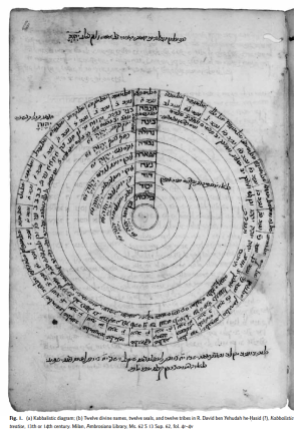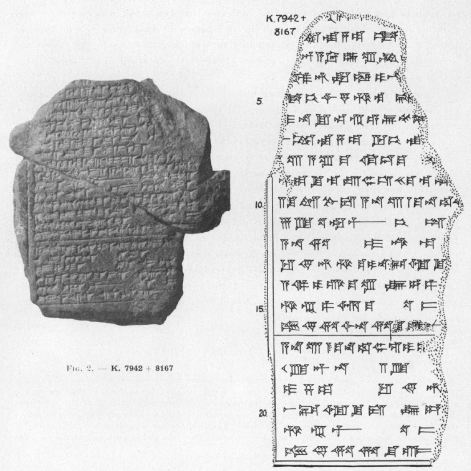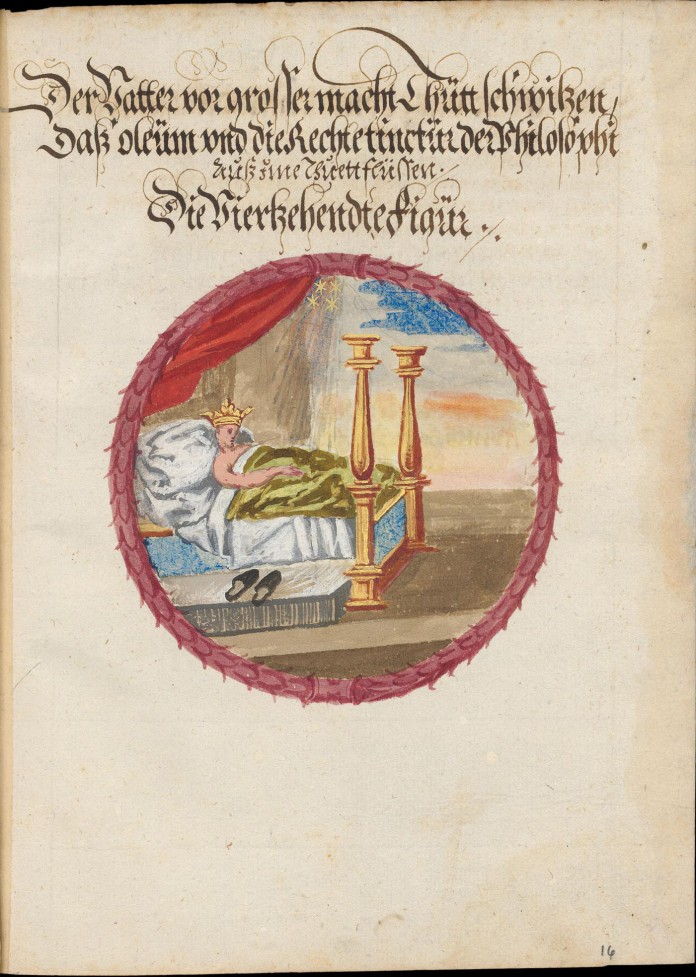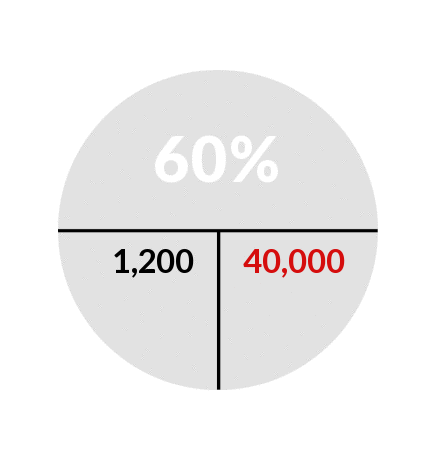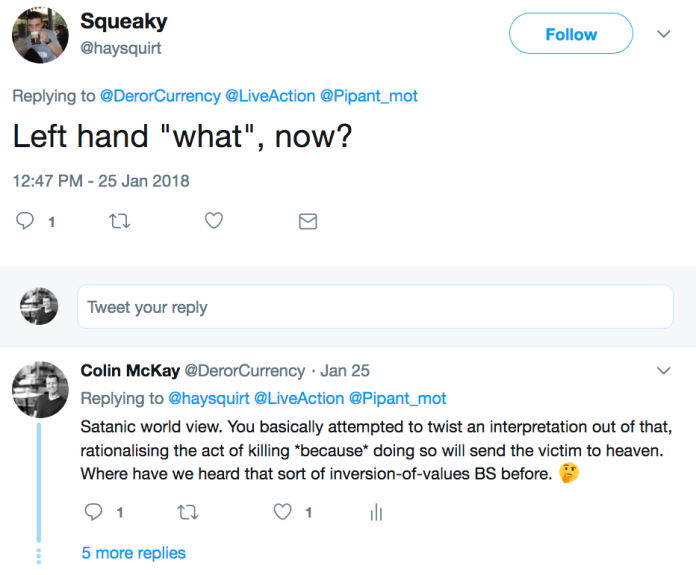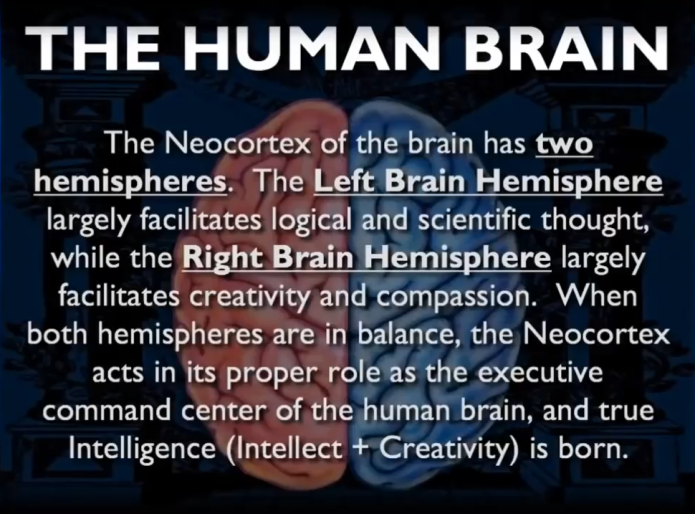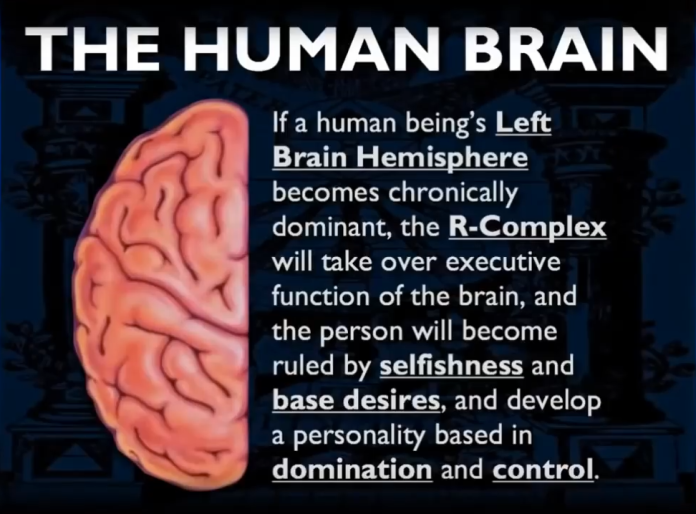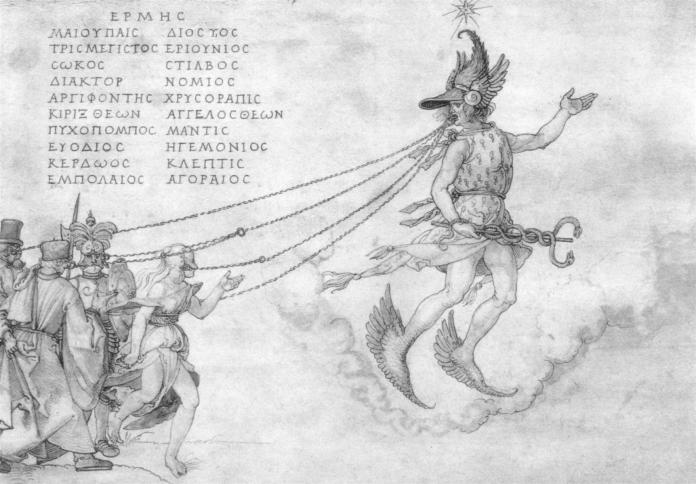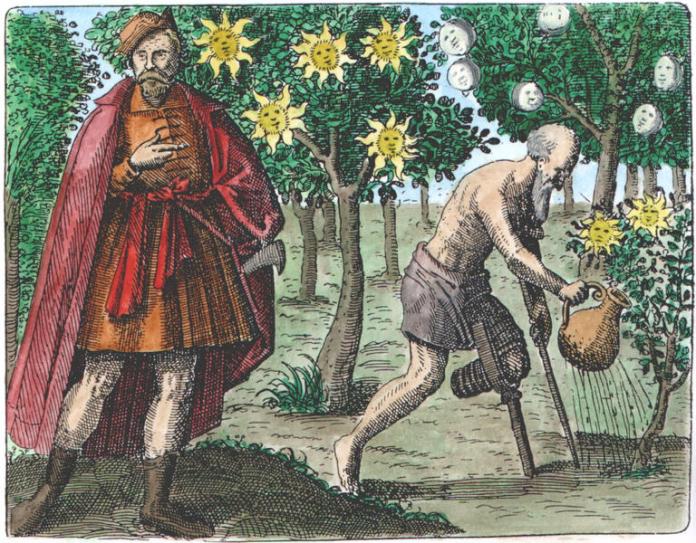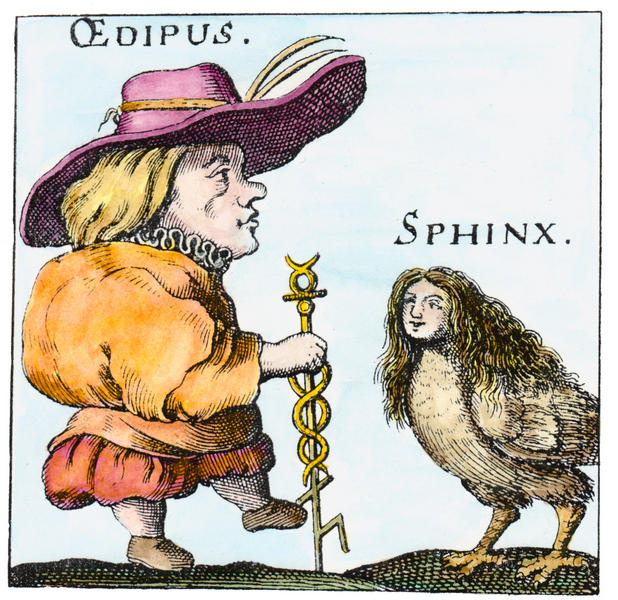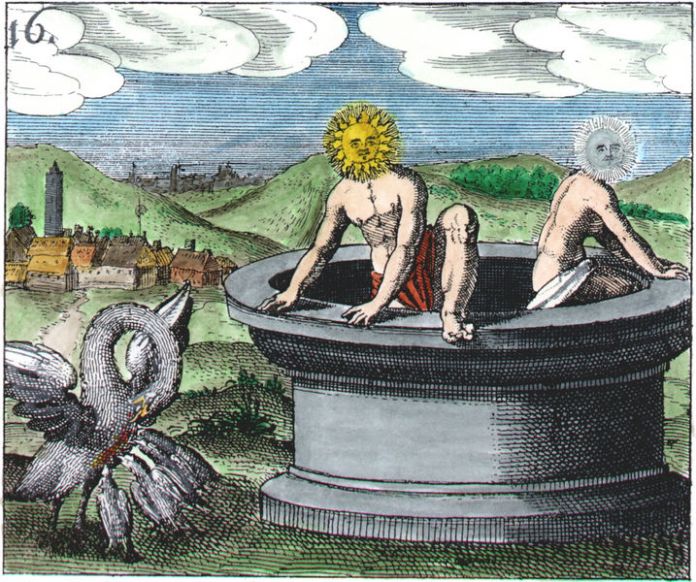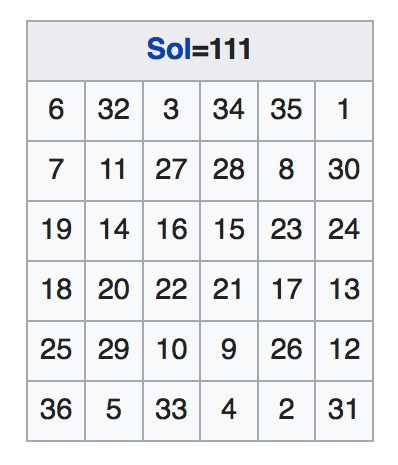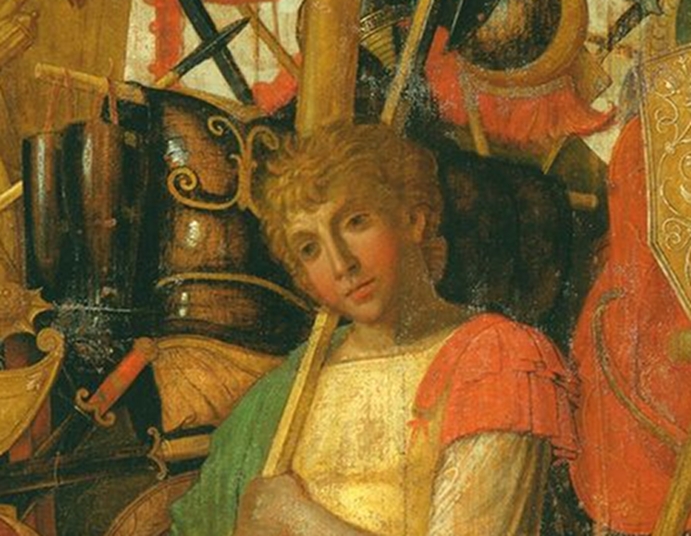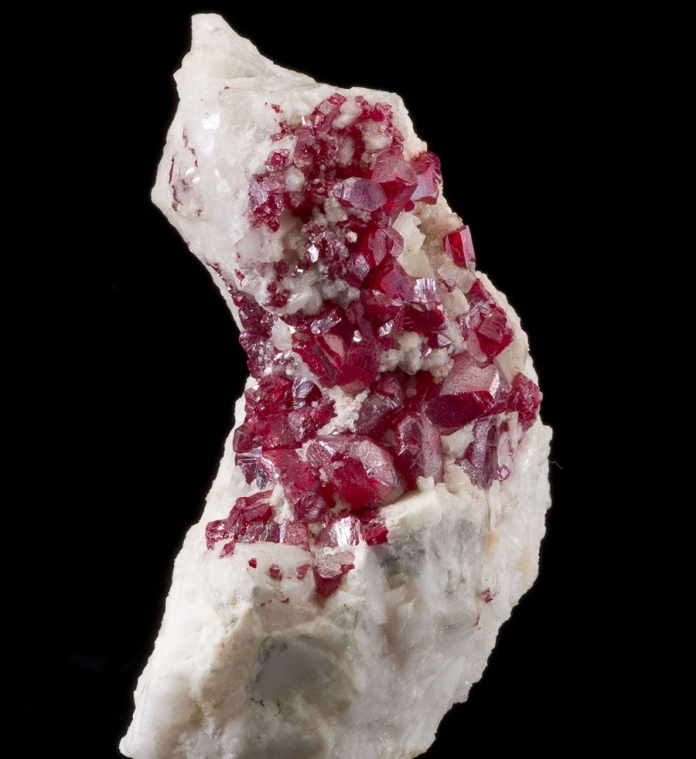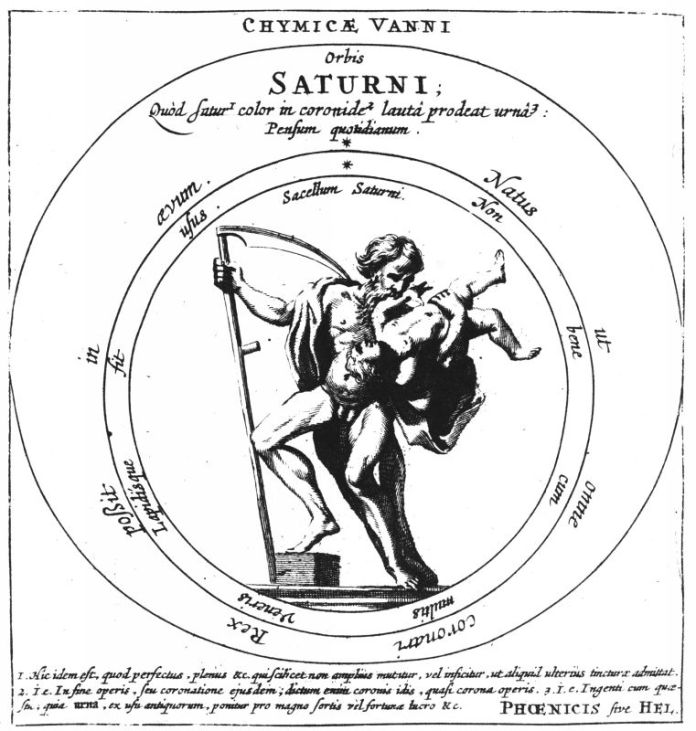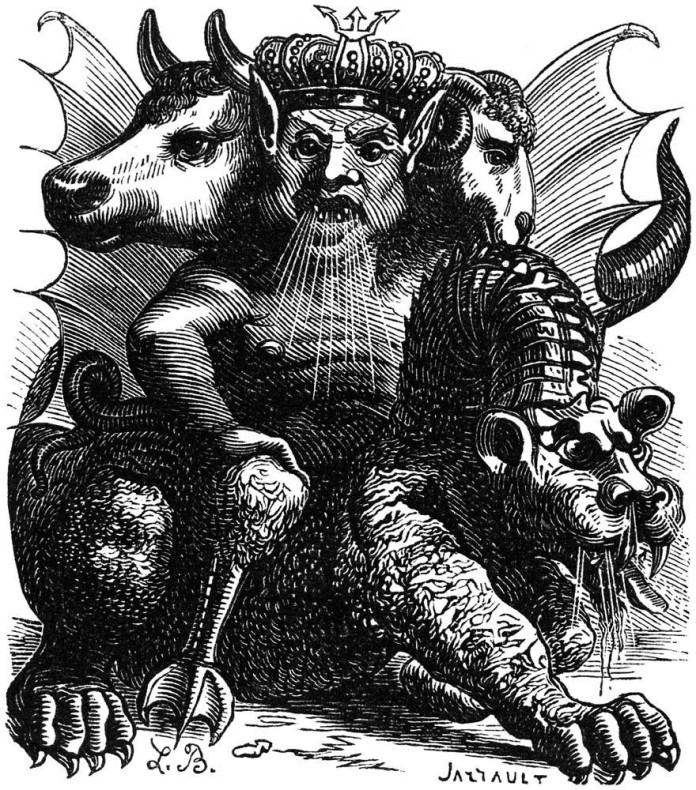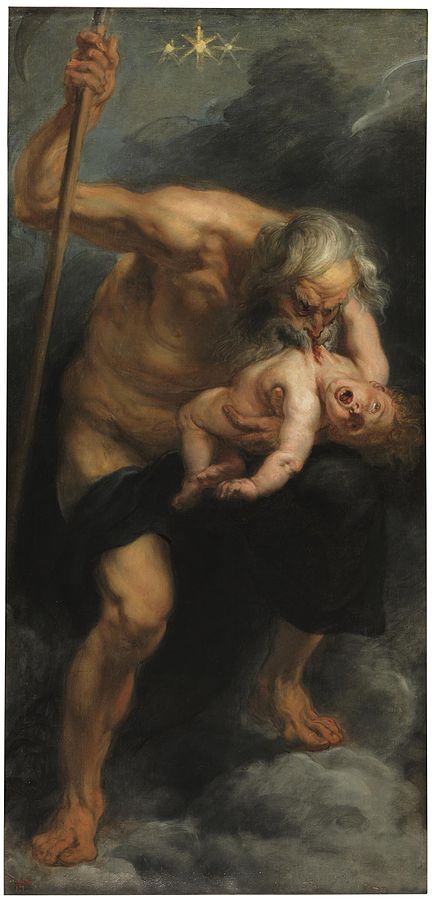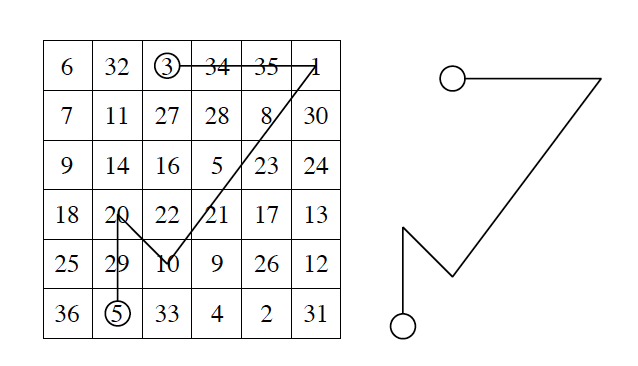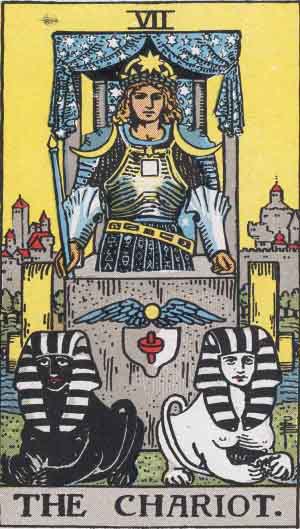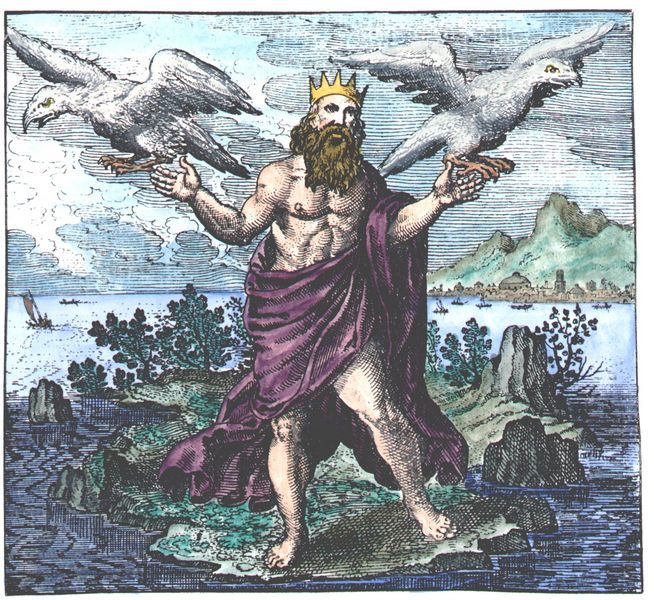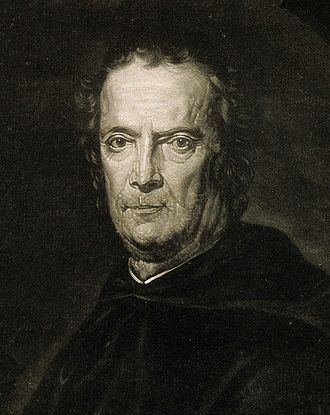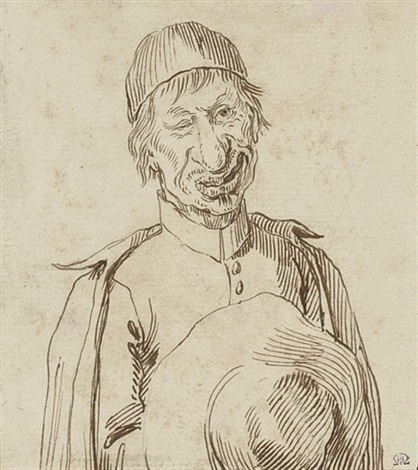A senseless man has no knowledge,
Nor does a stupid man understand this
The tsaddiq* will flourish like the palm tree,
He will grow like a cedar in Lebanon.[1]
* “righteous man”
There’s a lady who’s sure all that glitters is gold
And she’s buying a stairway to heaven.
When she gets there she knows, if the stores are all closed
With a word she can get what she came for.
Ooh, ooh, and she’s buying a stairway to heaven.
There’s a sign on the wall but she wants to be sure
‘Cause you know sometimes words have two meanings.
In the tree by the brook, there’s a songbird who sings,
Sometimes all of our thoughts are misgiven.
Ooh, it makes me wonder,
Ooh, it makes me wonder.

Palindrome ΝΙΨΟΝ ΑΝΟΜΗΜΑΤΑ ΜΗ ΜΟΝΑΝ ΟΨΙΝ
(Nipson anomemata me monan opsin, Wash your sins, not only your face)
inscribed in ancient Greek upon a holy water font outside the site of
Saint Hagia Sophia church in Constantinople. The phrase can be read
from left to right or from right to left.[2]
What is your favourite poem or song?
Imagine it being performed by two people. As in a duet.
Now, imagine that each performer begins with the verse at opposite ends – the first and the last – crossing over at the middle verse. Each performs one-half verse alternately, moving up and down, down and up the verses, like rungs on a ladder. Like Jacob’s angels, ascending and descending on their stairway to heaven.
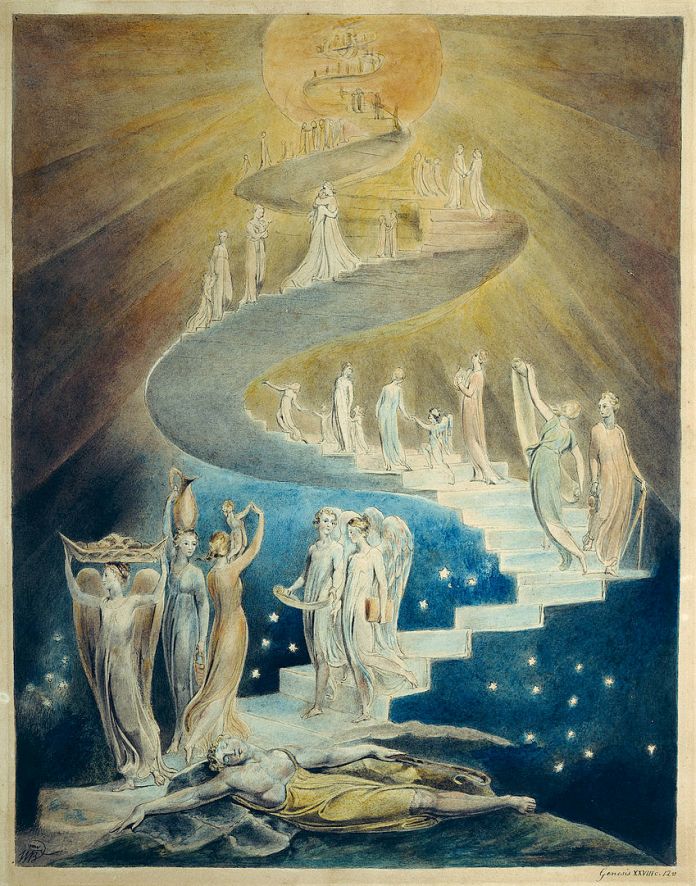
Jacob’s Dream by William Blake (c. 1805, British Museum, London)
What do angels do? Sing psalms (תהילים tehilim, “praises”) to God.
The verses of the poem or song as performed would give birth to new, composite verses, quite different to those appearing in the text as written.
Now, unless the artist has deliberately constructed his poem or song to be performed in this way, these composite verses would likely be nonsensical gibberish.
Oh, say, can you see?
O’er the land of the free
By the dawn’s early light
and the home of the brave!
What so proudly we hailed
Oh, say, does that star
at the twilight’s last gleaming;
-spangled banner yet wave?
Whose broad stripes and bright stars,
Gave proof through the night
through the perilous fight,
that our flag was still there:
O’er the ramparts we watched
And the rocket’s red glare,
were so gallantly streaming.
the bombs bursting in air.
O’er the land of the free
Oh, say, can you see?
and the home of the brave!
By the dawn’s early light
Oh, say, does that star
What so proudly we hailed
-spangled banner yet wave?
at the twilight’s last gleaming;
Gave proof through the night
Whose broad stripes and bright stars,
that our flag was still there:
through the perilous fight,
And the rocket’s red glare,
O’er the ramparts we watched
the bombs bursting in air.
were so gallantly streaming.
A truly clever artist, however, could include hidden meanings within such a work. Sprinkle in a double entendre, a euphemism, a subtle wordplay or two, and he might even succeed in – oh let’s say – mocking his co-performer of the work, without their knowing it.
Psalm 92 is not considered one of the most difficult pieces of poetry in the Psalter. Its vocabulary and syntax are quite clear and its meaning is the subject of a general consensus. Apparently, the poet compares the temporary prosperity of the wicked with the durable experience of divine blessing reserved for the righteous.
Several elements, however, point to an additional and deeper level of meaning. The first is the elusive nature of both the conflict and the protagonists’ identity. The second is the lack of consensus concerning the genre of this song.
This vagueness originates in the singular mixing, in this psalm, of verses of praise (vv. 2-6, 9, 11, 13–16) and of condemnation of the wicked (vv. 7–8, 10, 12).[3]
In other words, it is a hieros gamos (“holy marriage”); a coniunctio oppositorum[4] (“union of opposites”) in sacred song.
The road up and the road down are the same thing.
Heraclitus (cit. in Hippolytus, Refutation of All Heresies)
But one half is cheating, with forked tongue double meanings, and cunningly attacking the other.
Ancient Greek: διάβολος diábolos: a slanderer, false accuser
from διαβάλλω diabállō : “I throw over”, “I throw across”,
“I slander”, “I deceive by false accounts”, “I set at variance” or “I make a quarrel between”
from διά (diá, “across”, “through”, “between”) and βάλλω (bállō, “I throw”)
Translation from Hebrew שָׂטָן satan: adversary, opponent
diá (two, double)
from *δισα (disa), from Proto-Indo-European *dwís (related to δίς (dís, “twice”) and δύο (dúo, “two”))
bólos (a throw with a casting net, or dice)
diábolos (devil): a double-thrower
Agent noun from διαβάλλειν diaballein “to slander, attack”
from diá (across, through, divide) and ballein (“to throw” a weapon, e.g. a stone or arrow [or word – CM])
This is exactly what happened in the newly monotheistic temple cult at Jerusalem during the Persian Empire (c. 538–330 BC). Yahweh-worshipping poet-singers from the southern Canaanite region of Edom were integrated into the temple elite by Ezra, the High Priest and Scribe. Their counterparts – or opposites – and the official cultic performers, were Asaphites. According to the book of Ezra, they were descendants of the Jerusalem elite who had been exiled to Babylon in the early sixth century BC.
It has been taught: R. Yosé says . . . “Even though the Torah was not given through [Ezra], through him was given the accepted form of writing and of speech.”
Rabbi says, “The Torah was given in Assyrian characters, and when they signed, it was turned into Raas* characters for them. But when, in the time of Ezra, they attained merit, it was turned into Assyrian characters for them.”
[“Return to your stronghold, O prisoners of hope;] today I declare that I will restore to you double” (Zech. 9:12).
“And when he sits on the throne of his kingdom, he shall write for himself in a book a copy of this law, [from that which is in charge of the Levitical priests]” (Deut. 17:18). This will be in a form of writing [71c] which can be changed.
Yerushalmi (Palestine) Talmud, Meg. 1:9 [5]
*Hebrew slang, from Arabic “bujaras” meaning “nuisance”. From Arabic وجع راس (waja3 raas) meaning “headache”; cf. Hebrew רֹאשׁ rósh “head”; רָעַשׁ râ‛ash “to shake”, “to quake”.
Unlike the ex-Babylon immigrants, the Edomites had retained their ancient liturgical and musical traditions.
A cult of YHWH in Edom is only elusively mentioned in the Bible. However, the origin of YHWH in Seir/Edom is stated outright (Seir: Deut 32,2; Judg 5,4; Teman/Paran: Hab 3,3), independently of Israelite Yahwism and even preceding it.
[T]his superiority of the musical traditions of the psalmist and his companions fits their identification as Ezrahites because the sons of Zerah were apparently reputed among the Israelites for their cleverness and wisdom (1 Kgs 5,11) [4:31]* and, consequently, for their ability to craft poetic riddles. Their musical tradition is also very ancient. According to Gen 4,19–22, poetry and music are rooted in the lineage of Cain, itself closely related to Edom/Seir. This is why the Ezrahite musicians and poets may deem themselves to be carriers / trustees of the musical and poetic traditions of Canaan.
* This is confirmed by the association of wisdom with Edom in Jer 49,7 and Obad 8.[6]
If there’s a bustle in your hedgerow, don’t be alarmed now,
It’s just a Spring clean* for the May queen.
Yes, there are two paths you can go by, but in the long run
There’s still time to change the road you’re on.
And it makes me wonder.
And as we wind on down the road
Our shadows taller than our soul.
There walks a lady we all know
Who shines white light and wants to show
How everything still turns to gold.
And if you listen very hard
The tune will come to you at last.
When all is one and one is all
To be a rock and not to roll.
And she’s buying a stairway to heaven.
*Persian خانهتکانی : literally “shaking the house”.
Lyrics: Robert A. Plant, son of “gypsy” Annie Celia Plant (née Cain),
viz. a woman who “took everything without giving anything back.”
Palestine/Arabian saw-scaled viper (Echis coloratus) has a characteristic threat display,
rubbing sections of their body together to produce a “sizzling” שׂ warning sound.

“Why is this script called Ashurit [אשורית A-shur-it]? Because it ascended with the Jewish people from Ashur when they returned from their exile in Babylonia.” (Sanhedrin 22a:2)
L-R: vav or waw (6th letter, value: 6)
Shin or Šin (21st letter, value: 300)
Four-tooth Shin feat. on left side of tefillin
represents “the World to Come”
The allegory of the wise and “subtil” (עָרוּם ʻârûwm, shrewd, cunning; pun עָרוֹם ʻârôwm, naked, Gen 2:25) serpent in the Garden of Eden, who tempted the first woman with “forbidden fruit”, that makes one ‘wise’ (שָׂכַל sâkal) “as gods” (אֱלֹהִים ʼĕlôhîym), a product of the Tree of Knowledge of Good and Evil – in other words, a ‘fruit’ born of the knowledge of how to mix together opposite “voices”, a “sense” voice and an “anti-sense” voice, a Good one and an Evil one, a plus one (𓂻)* and a minus one (𓂽) – will be illuminated in later essays.

Woodcut by Jost Amman from Jacob Rueff, De conceptu et generatione hominis, Frankfurt, 1587. © Adam McLean 1997-2017 (alchemywebsite.com). Used with permission.
* Hieroglyph of feet walking forward 𓂻 : in Egyptian mathematics “make in going”; to square, double (i.e.) to multiply by oneself … and, esoterically, one’s self. [7]
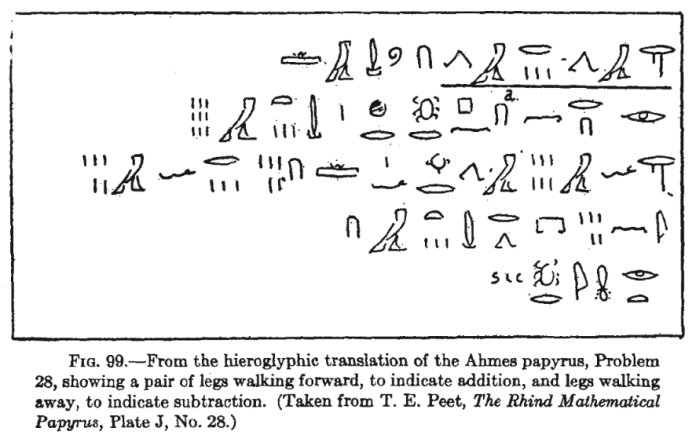
A History of Mathematical Notations (Florian Cajori)
Ezra’s assimilation of more skillful Edomite poet-singers into the Jerusalem temple cult resulted in intense rivalry with the returned Asaphites.[8] The biblical and later, the rabbinic narrative, insists that these distant descendants of patriarchal twin brothers, Jacob (יַעֲקֹב “heel-catcher”, i.e., usurper, layer of snares; renamed Israel יִשְׂרָאֵל “contender”) and Esau (עֵשָׂו “hairy”, renamed Edom אֱדֹם “red”; compare Adam אָדַם “to be red”, “ruddy”), have shared a long history of acrimonious relations.
[T]he Psalter of songs [reflects] violent conflicts surrounding the question of integrating foreign (Ezrahite) singers in the Jerusalem temple. In this retaliation, the most efficient weapon is probably the ability to compose songs that carry a concealed meaning too subtle to be understood by members of the opponents’ group. By this device, poets may express their superiority, articulate their closeness to YHWH, and mock their opponents.
Such a stratagem seems to be fully in action here. Psalm 92 is a conflictive poem disguised as a piece of liturgy composed for official worship in the temple.
Psalm 92 is not the only biblical poem in which the Ezrahites reference their enemies in the post-exilic community. Briefly expressed scorn by the Ezrahites against their opponents is already identified at the end of Psalm 112, the song which, together with Psalm 111, was apparently composed (again, in complex antiphonal fashion) for their new investiture as cultic singers at the Jerusalem temple…
The contrasting situation (Asaphite singers attacking the Ezrahites) is also identified in the Psalter. In Psalm 14, for example, the opponents (here, the Ezrahites) are called vile hypocrites (pōʿalêy ʾāwen)*, mainly because they are accused of exploiting their new status of cultic singers in the Jerusalem temple for the secret promotion of their own theology at the expense of the Israelite one while having been appointed and supported by the post-exilic community.
* “workers” (פֹּ֪עֲלֵ֫י) of “wickedness” (אָ֥וֶן); “makers” of “trouble”
The multiple references to the psalmist’s foreign traditions and theology in Psalm 92 indicate that the accusation formulated in Psalm 14,4 is far from unfounded. The verbal violence in this conflict reaches its climax in Psalm 137, a song of Asaphite obedience that explains the reason for appointment of the foreign (Ezrahite) singers in the Jerusalem temple (the loss of musical tradition of the Israelite singers in exile, as noted in vv. 1-6) and immediately afterwards expresses their bitter detestation of the Edomite people, with whom these foreign singers are identified (vv. 7–9):
Remember, YHWH, the children of Edom [on] the day of Jerusalem,
How they said, “Lay it bare, lay it bare, down to its foundations!”
Vassal of Babylon [=Edom] doomed to be destroyed,
Blessed shall he be who repays you with what you have done to us!
Blessed shall he be who takes your little ones
And dashes them against the rock!
If the title of the psalm [92] dates from the time of its composition, we may assume that it represents an ultimate stratagem. Disguising this conflicting poem as a psalm devoted to the Sabbath liturgy is a subtle way of inducing its author’s opponents to perform it every week without understanding its genuine content and implications. Indeed, a situation of people devotedly singing a sentence such as “The brutish man cannot know; The stupid cannot understand this” (v. 7) without understanding that it refers specifically to them is a comic demonstration of the rightness of the psalmist who claims his art to be superior to that of his opponents and rivals. The insertion of this song into the Psalter, and even the preservation of the reference to the Sabbath liturgy in the title, reveals the repeated success of such a stratagem, generation after generation.[9]
“Complex antiphony” is the technical term for this mode of poetic or musical performance. It mixes two opposing voices, reciting or singing the same text, but in the inverse order of its verses.
[T]he text of the song divides in two parts, each one sung by another voice. The text of these two parts divides in small antiphonal units designed to be paired during the performance. [..] the homolog fragments from the two parts, once paired as composite verses, yield a coherent composite text displaying structural features characterizing biblical poetry.[10]
Antiphony is alternation between two choirs. This mode of performance is extensively attested in the ancient Near East, especially in cultic context. [..] It would appear from these [biblical] instances that antiphony was also a privileged mode of performance of the cultic songs in the Jerusalem temple—as it has been long argued by many scholars.
When the walls of Jerusalem are consecrated in Neh 12:27–41, singers and musicians form two distinct choirs designated as תּוֹדֹת (todah; “confession”, “thanksgiving”). They perform while walking on/near the city walls, each one in a different direction, finally meeting at the temple where they combine their voices in an apparently antiphonal fashion (vv. 31, 40, 42).[11]
By structuring a composition this way, a skilled creative artist causes his passive text to “give birth” or “bear fruit,” to flower in its active performance. Or, to borrow the ancient Egyptian way with words, to “make [square2] in going” 𓂻 ; to multiply by oneself. The combined flow of two opposing voices reveals new information that otherwise remains hidden in a normal, linear recital of the verses by a single voice.
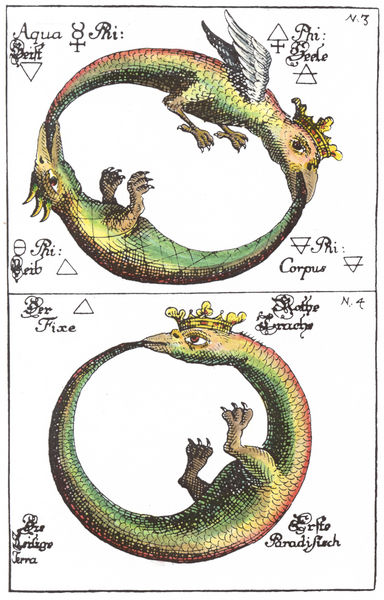
Samuelis Baruch, des Juden Rabbi, Astrologi und Philosophi, gebohren aus dem Stamm Abrahams, Isaacs, Jacobs und Judä, welcher erlernet das grosse Geheimniss des grossen Meisters Tubalkains aus dessen Tabell, gefunden von Abrahamo Eliazare, dem Juden. Erfurt, 1735. © Adam McLean 1997-2017 (alchemywebsite.com). Used with permission.
Concentric symmetry invests the text of a song with palindromic properties and, especially, the ability to read its verses in both ascending and descending order. From the perspective of complex antiphony, this property suggests that Psalm 92 was designed for dialogic performance between a “sense voice” (first choir), which sings the text in ascending order of verses, and an “antisense voice” (second choir) that responds by singing the same text in descending order. Such a pattern, already identified in biblical poetry, has been defined as cross responsa.[12]
Translation as proposed by Amzallag (2017).
“Tormentors” and “counterparts” used for
untranslatable double entendres.
In Psalm 92, the pairing of corresponding verses from the sense and antisense voices yields a series of composite verses (CVs) centering on an echo performance of verse 9 (identified above as the pivotal axis), after which both the ranking and the precedence of paired verses become inverted: 2//16 → 3//15 → 4//14 → 5//13 → 6//12 → 7//11 → 8//10 → 9//9 → 10//8 → 11//7 → 12//6 → 13//5 → 14//4 → 15//3 → 16//2. [..] The only monocolic verse in this song (v. 9) can be paired only with itself, exactly as observed here.

Cancer (Latin: crab): fourth sign of zodiac
Approx. June 22 to July 22 in classical antiquity
July 17 +/- 2 days = Sirius’ heliacal rising, herald of Nile inundation
Alchemists’ symbol for dissolution. Compare 🝢 in Basil Valentine,
A Table of Mediaeval Alchemical Symbols, The Last Will and Testament (1670)
Scholars have identified verse 9, an expression of praise (“You, YHWH, are on high forever”), as the rhetorical center of Psalm 92—the pivotal verse that stresses YHWH’s supremacy and his indifference to the stratagems fomented by the psalmist’s enemies, evoked in the two verses that flank it (vv. 8, 10). This pivotal function of verse 9 is confirmed by its position at the exact numerical center of the song (52 words before and after) and by the central (fourth) mention among the seven mentions of the name YHWH.[13]
The selection of verse number 9 (Hebrew ninth letter ṭet ט “good”, from Phœnician/Paleo-Hebrew ⊗ “wheel”) as pivotal would seem to be of great significance. Observe that the first verse, “A psalm. A song; for the Sabbath day” is titular. Its four Hebrew words are not included in the 52 before/after verse 9. Meaning, the turning point verse 9 is really verse 8 (khet or ḥet ח , from Paleo-Hebrew  , Phœnician
, Phœnician  , “courtyard”). This also means that there are only fifteen verses. Not sixteen.
, “courtyard”). This also means that there are only fifteen verses. Not sixteen.
The fifteenth Hebrew letter samekh ס derives from the Phœnician and Paleo-Hebrew  “pillar”, “support”, “stability”; from the ancient Egyptian “djed”. Their symbol 𓊽 represents the spinal column of the demiurge creator god Ptah; later, the underworld and afterlife supreme god of the dead, Osiris.
“pillar”, “support”, “stability”; from the ancient Egyptian “djed”. Their symbol 𓊽 represents the spinal column of the demiurge creator god Ptah; later, the underworld and afterlife supreme god of the dead, Osiris.
But since in reality Big Brother is not omnipotent and the Party is not infallible, there is need for an unwearying, moment-to-moment flexibility in the treatment of facts. The key word here is blackwhite. Like so many Newspeak words, this word has two mutually contradictory meanings. Applied to an opponent, it means the habit of impudently claiming that black is white, in contradiction of the plain facts. Applied to a Party member, it means a loyal willingness to say that black is white when Party discipline demands this. But it means also the ability to believe that black is white, and more, to know that black is white, and to forget that one has ever believed the contrary. This demands a continuous alteration of the past, made possible by the system of thought which really embraces all the rest, and which is known in Newspeak as doublethink.[14]
In gematria, the number 15 is written with Tet and Vav, (9+6) to avoid the normal construction Yud and Hei (10+5) which spells a name of God. Similarly, 16 is written with Tet and Zayin (9+7) instead of Yud and Vav (10+6) to avoid spelling part of the Tetragrammaton.
Tet is also one of the seven letters which receive special crowns (called tagin) when written in a Sefer Torah.[15]
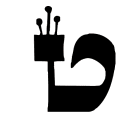
Teth – Ktav Ashurit (“Assyrian”) script
In the Torah there are many applications to the “law of similars.” One of them is that in order to kill a snake you must be like a snake.
In gematria, Mashiach [“Messiah”, “Anointed”] (משיח ,358) equals snake (נחש). As extreme opposites they are in fact similar, numerically identical.
Mashiach is the one soul that is capable of killing the evil snake, the evil inclination in the heart of man.[16]
Now this rabbit hole is deep, dear Alice. It is one that takes us back 5500+ years, through many ancient cultures, and through the rise of astrotheology, metallurgy, sciences, arts, the development of speech, language, abstraction, writing, symbolism, mysticism and magic, to early pre-dynastic Egypt. So it needs be explored at another time. To whet the appetite, consider only this:
XXXII (32). When they would represent delight they depict the number 16*; for from this age men begin to hold commerce with women, and to procreate children.
XXXIII (33). To denote sexual intercourse they depict two numbers 16. Cum enim sedecim voluptatem esse diximus; congressus autem, duplici constet, maris ac fœminæ, voluptate, propterea alia sedecim adscribunt.
Hieroglyphica (I) by Horapollo (c. 500 AD) [17]
*From Pliny (Nat. Hist. V. 10.) we may infer that number 16 as a procreative symbol references the rising waters of the Nile:
While it is rising it has been pronounced criminal for kings or prefects even to sail upon its waters. The measure of its increase is ascertained by means of wells. … When the water rises to only twelve cubits, [Egypt] experiences the horrors of famine; when it attains thirteen, hunger is still the result; a rise of fourteen cubits is productive of gladness; a rise of fifteen sets all anxieties at rest; while an increase of sixteen is productive of unbounded transports of joy.[18]
Like the crest of a peacock, like the gem
on the head of a snake, so is mathematics
at the head of all knowledge.
Vedāṅga Jyotiṣa by Lagadha (c. 500 BC)[19]
The structure and vocabulary of Psalm 92 reveal the same under-lying principles as those found in Jewish esotericism (Cabala), and in double entry bookkeeping. These ancient gnostic principles are the foundation of modern accounting, banking, finance, equilibrium economic theories, and thus, of worldly power and control of others.
Jewish gnosticism unquestionably antedates Christianity, for Biblical exegesis had already reached an age of five hundred years by the first century C.E. Judaism had been in close contact with Babylonian-Persian ideas for at least that length of time, and for nearly as long a period with Hellenistic ideas. Magic, also, which … was a not unimportant part of the doctrines and manifestations of gnosticism, largely occupied Jewish thinkers. There is, in general, no circle of ideas to which elements of gnosticism have been traced, and with which the Jews were not acquainted. It is a noteworthy fact that heads of gnostic schools and founders of gnostic systems are designated as Jews by the Church Fathers.
Jewish Encyclopedia 1906
These principles are already found in the ‘magical’ art of extispicy and Šumma Izbu: ancient Mesopotamian divination, using sheep livers and malformed foetuses.[20]
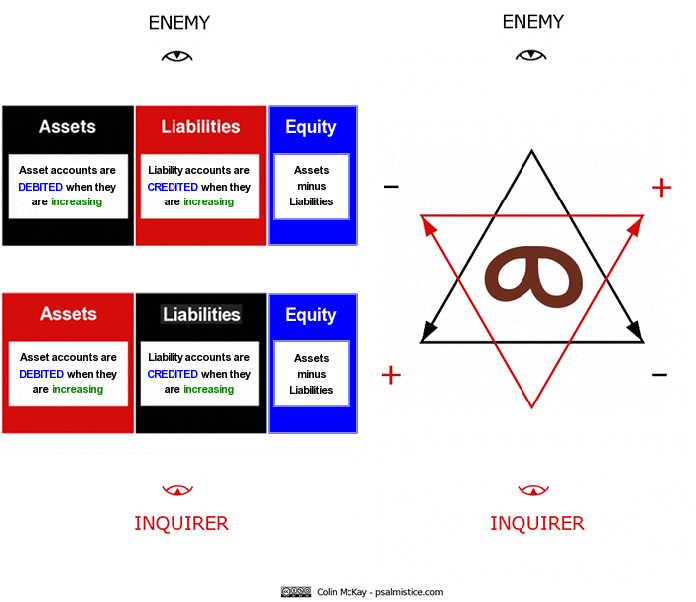
We have previously referred to these principles (e.g., here, here) as the Union of Opposites and the Law of Inversion (or Reversal); and, as the Paradox of Opposite Perspectives.
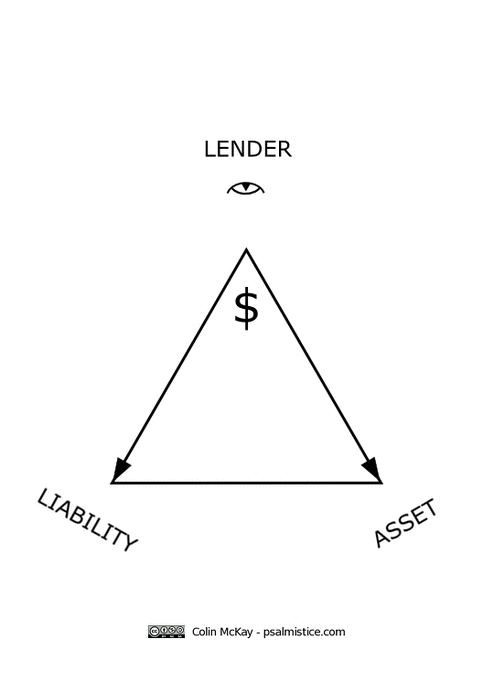 With bank loans – ‘money’ created out of Nothingness by double entry bookkeeping – the ‘magic’ trick is hidden in the cunning wordplay used to describe what the bank owes (debt) to its customers (“Accounts Payable”). This debt owed to its customers is, simultaneously – and legally – the banks’ asset (‘unsecured’ “Client Deposits”).
With bank loans – ‘money’ created out of Nothingness by double entry bookkeeping – the ‘magic’ trick is hidden in the cunning wordplay used to describe what the bank owes (debt) to its customers (“Accounts Payable”). This debt owed to its customers is, simultaneously – and legally – the banks’ asset (‘unsecured’ “Client Deposits”).
In essence, all the ‘money’ in all the banks is owned by the banks, and by the customers. Simultaneously. Truth be told however, all the ‘money’ is merely bookkeeping entries: records of the banks’ promises to pay out the physical cash money (legal tender) that is owed by the banks to their customers.
In other words, it does not exist. All the ‘money’ in all the banks, is just an illusion. A word and number magic trick.
On its creation as a +1|-1 (= 0) double entry bookkeeping record, the new ‘loan’ instantly becomes a new ‘deposit’.
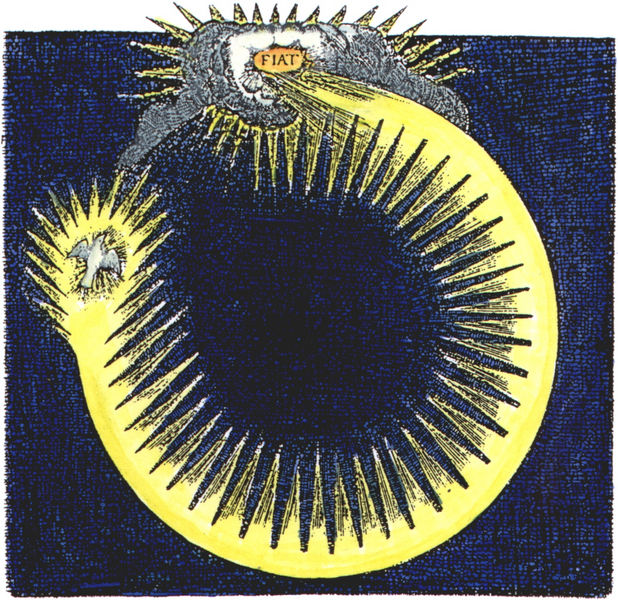
Robert Fludd, Utriusque Cosmi Maioris scilicet et Minoris Metaphysica Physica Atque Technica Historia, 1617-1621. © Adam McLean 1997-2017 (alchemywebsite.com). Used with permission.
In the fulness of that unceasing reality we call the flow of Time, the true value of the one (1) Interest-bearing Liability record called the “Client Deposit”, is not equal to the true value of the same one (1) Earning Asset record called the “Loan”. This hidden-in-plain-sight, income-‘earning’ (i.e. extracting) inequality between the opposites is also embedded in the structure and vocabulary of Psalm 92.
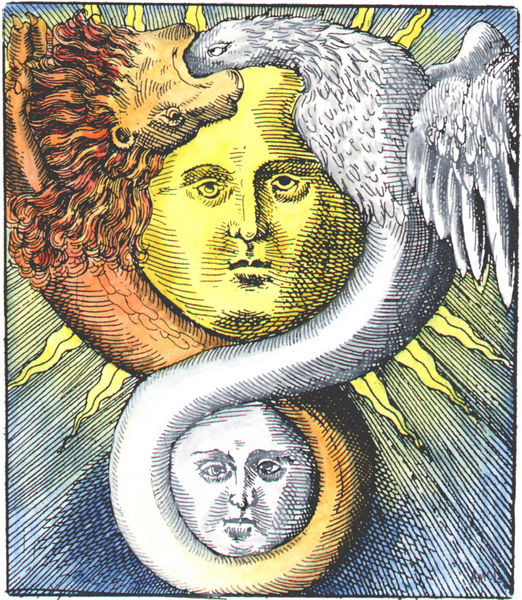
Azoth (from Arabic al-zā’būq: “Mercury”) | Fourth woodcut from Basil Valentine’s Azoth (1613). © Adam McLean 1997-2017 (alchemywebsite.com). Used with permission.
The fundamental profits of banking come from the Net Interest Margin. This is the (usually) small, subtle difference between the rate of usury (“interest”) that a bank pays on ‘deposits’, and the rate of usury that it ‘earns’ on loans.
The primary business of a bank is managing the spread between deposits that it pays consumers and the rate it receives from their loans. In other words, when the interest that a bank earns from loans is greater than the interest it pays on deposits, it generates income from the interest rate spread.
Investopedia
In other words, banking is just a practical analogue of the mythical self-generation powers of Creator deities in ancient religion.
Recall our earlier observation that Psalm 92’s pivotal verse number 9 (“wheel”) is really verse number 8 (“courtyard”). This monocolic verse number 9 (i.e. 8) is performed in echo. The remaining verses are cola pairings (dicola) – four half-verses, performed alternately. However, the two verses immediately preceding and following the pivotal verse 9 (8) are the exceptions.
Scholars have identified verse 9 … [as] … the pivotal verse that stresses YHWH’s supremacy and his indifference to the stratagems fomented by the psalmist’s enemies, evoked in the two verses that flank it (vv. 8, 10).[21]
Verses number 8 (i.e. 7) and 10 (i.e. 9) are tricolic: each comprises six half-verses. These two verses, number 7 (ז zayin, from Proto-Sinaitic glyph zaynu  “sword” or ḏiqqu “manacle”, slang “penis”) and 9 (“wheel”), bespeak the destruction of the Edomite psalmist’s opposition. The following quotation uses the scholar’s (incorrect) numbering, which considers Psalm 92’s title as verse 1.
“sword” or ḏiqqu “manacle”, slang “penis”) and 9 (“wheel”), bespeak the destruction of the Edomite psalmist’s opposition. The following quotation uses the scholar’s (incorrect) numbering, which considers Psalm 92’s title as verse 1.
After alluding to those who are unmindful of the subtleties of this art [CV6]* the poet now devotes the next composite verse to his opponents. The first pair designates them as evildoers (rešāʿîm, 8a) and, by so doing, summarily transforms them into enemies of YHWH (10a).
*Nb. the author’s composite verse numbering [CV] 1-15 could be viewed as supporting my assertion of error.
The expression pōʿalêy ʾāwen is generally translated as evildoers. In Psalm 141,9, it is associated with the setting of snares [cf. יַעֲקֹב Jacob, aka “Israel”: “layer of snares” – CM], a malicious furtive mode of action. The very same perfidy is attributed to pōʿalêy ʾāwen in Prov 30,20. In Psalm 14,4, the term pōʿalêy ʾāwen specifically evokes people who live in the Jerusalem temple and, while involved in the official cult of YHWH, are accused of corrupting it intentionally. Accordingly, if the opponent group refers to cultic singers working at the Jerusalem temple, it seems that pōʿalêy ʾāwen designates them as people of righteous and virtuous appearance who secretly do evil to their peers, the psalmist and his companions. It should therefore be translated as vile hypocrites.
The appellation as pōʿalêy ʾāwen in the second and third pairs (8b and 10c respectively) reveals the nature of their misconduct: they strive furtively to discredit the psalmist and his companions in the eyes of the Israelites.
The inversion of precedence between verses 8 and 10, in CV9 introduces a new element. Now, the perdition of the psalmist’s enemies (v. 10) is revealed through the vegetal metaphor (v. 8). Since this latter is closely related to the musical worship of YHWH in the temple, we may conclude that the poet considers the rival group’s poor musical and poetic performances the most blatant evidence of their perdition.[22]
There is more evidence that the ‘devilish’ trickery embedded in the complex antiphonal singing of the Jerusalem temple cult is a precise analogue of ‘modern’ bank credebt creation. It is found in the Hebrew words used to describe this ancient musical system.
The sacred singing of the opposites – of ascending and descending ‘voices’ of “praise” and “thanksgiving” – was believed to cause the theophany (literally “appearance”) of the Canaanite serpent deity, that is known by a ‘magic’ four-letter word having the same ‘hidden’ procreative connotation as a word that rhymes with “buck”.[23]
The spontaneous revelation of YHWH provoked by his musical worship is explicitly mentioned in I Sam 10,5–6.10–11, where the presence of a musical / choral procession stimulates spontaneously a ›spirit of prophecy‹ among the participants.[24]
A proverb from Egypt’s Middle Kingdom (c. 1938–1630 BC) says:
Ye shall offer to me with what is in your hands; if there chance to be nothing in your hands, ye shall say with your mouths.[25]
The implication is that you are commanded to make sacrifices – to the ruling elite, presumably, as earthly representatives of the deity/s – but if you have nothing of value to offer, then words of praise are an acceptable substitute. Exactly the same principle is hidden in the Hebrew bible. Particularly in the words of the psalmists.
As we have seen above, the Greek word diábolos (devil), meaning “slanderer”, “false accuser”, “I deceive by false accounts”, equivalent to Hebrew satan, derives from root words meaning double-thrower, to throw or cast a net, stones or arrows.
The Gemara asks: How could she possibly become pregnant in such a manner? Didn’t Shmuel say: Any semen that is not shot like an arrow cannot fertilize?
Babylonian Talmud (Chag. 15a.2)
The Hebrew word lehōdôt (להודות), often mis-translated as “praise” or “thanksgiving”, is a Hifil (causative active voice) form of the Hebrew verb root ידה yâdâh – literally, to use (i.e. hold out) the hand. Yâdâh means to throw, shoot, cast; in (Qal) form, to shoot (arrows); (Piel) to cast, cast down, throw stones; (Hithpael) to confess (sin), or to give thanks. In other words, its primary (Qal) meaning and derivative conjugates convey identical concepts to the ancient Greek diábolos; including, most importantly, the possibility of double meanings.
The verb להודות (identified as hifil of ידה) is usually approached as a generalized expression of praise / thanksgiving to Yhwh.
A different semantic of להודות in the religious context is apparently expressed in a single instance, when the speaker turns to Yhwh to acknowledge his or her sins (Ps 32:5).
These meanings [praise, thanksgiving, confession or acknowledgement of sin] are not always easy to distinguish from one another in the biblical text. That is why most scholars have attempted to integrate them by assuming that the confessional and the musical dimensions of להודות are closely related to the act of praise, which is approached as the essential sense. However, this assumption is by no means indisputable, especially in light of the clear-cut distinction established in Egyptian and Akkadian between the notions of praise, confession, and thanksgiving.[26]
In a musical context, the verb להודות lehōdôt is translated as to sing antiphonally.[27]
[T]he verb להודות never designates the act of sacrifice.
The confessional context of להודות (Ps 32:5) corresponds to the “doxology in court” identified for תודה [“todah”] in Josh 7:19; Ps 26:7; Ezra 10:11.19.[28]
Ponder this in context of Psalm 92, and its analogous implications for bank credebt ‘loan’ creation by double entry bookkeeping. The “confessional” aspect of antiphonal ‘praising’ is – for one of the participants – really a covert public acknowledgment of sin before the divine judgment seat; and/or, a mocking (likely false) accusation made by the ‘superior’ party against their opponents.
According to L. C. Allen, “ידה” [yâdâh] in NIDOTTE, 2:406, “the thank-offering [= תודה-sacrifice] was accompanied by an individual song of thanksgiving, which was both a testimony to the congregation and a giving of thanks to God.”
Confirming as much is the use of תודה [todah] in a context of juxtaposition between music and animal sacrifice: “I will praise the name of God with a song, and will magnify Him with תּוֹדָּה. And it shall please Yhwh better than a bullock that has horns and hoofs” (Ps 69:31–32). The implication is that the musical performance was not approached as a mere ornament of the offering but rather as an essential feature.
This deduction is supported by G. Mayer, “יָדָה” [yâdâh] 5:437–438, who concludes that “without thanksgiving song there can be no thanksgiving offering. On the other hand, we hear of thanksgiving songs being sung without an associated sacrifice. A tôdâ can in fact take the place of sacrifice.”[29]
Likewise the banking system. It has been empirically proven, and openly admitted by central banks, that commercial banks do not lend from ‘reserves’. Nor do they lend out the savings of ‘depositors’.
There is no sacrifice by the bank. There is only a song of praise for “giving us your business”, and forked-tongue ‘confession’: that the magic numbers assigned to your “account” are real ‘money’, and that it is really your ‘money’.
Neither ‘confession’ is true.
It costs nothing to create new +1|-1 credebt entries, place a symbol in front of them, and then call those numbers by the magical name “dollar”, “euro”, or “pound”. And voila! on speaking (and writing) the magic name, the money god ‘appears’. Exactly like the theophany of the serpent deity in the psalms.
[There is] a relationship between the improvement of the knowledge (ידע) [yâdaʻ] of YHWH [in Ps 100:](3a) and the blessing [בָּרַךְ bârak] of his name (4d). A similar relation is observed between the two parallel members of Ps 76,2: »Known (נודע) in Judah [is] Elohim, In Israel great is his name (שמו)«. This relation is confirmed by the association frequently encountered in the Psalter between the cultic mention of the name of YHWH and the ›revelation‹ of the god.[30]

Recall that earlier we saw the Hebrew word תודה todah expressly referred to two half-choirs performing the Jerusalem wall rebuilding inauguration ceremony (Neh 12:27–41).
In its narration, the singers and musicians convoked for the ceremony were divided in two groups called תודות (Neh 12,31.38.40). [..] The description of their singing משמר לעומת משמר (Neh 12,24) strongly suggests that they were two half-choirs performing together in antiphonal fashion. This is not the only source associating todah with antiphony. A similar feature is encountered in Ps 147,7 »Respond (ענו) to YHWH in todah, sing to our God with the lyre«. Allusions to antiphony may also be identified in the corresponding verb form (להודות, hif. yadah). This verb is explicitly associated in Neh 11,17 to a musical performance involving two distinct choirs (one conducted by Mattaniah and another conducted by Abda). Also in Ezr 3,11 and in II Chr 7,6, the responsorial claim כי לעולם חסדו is associated with the verb להודות [lehōdôt].*
*In this latter case, להודות is associated with a dialogue between the Levites singing כי לעולם חסדו and the priests answering with their trumpets. Also in psalms 118 and 136, the verb להודות encountered in the first claim of the opening voice, may be interpreted as an invitation to respond turned to the second voice.[31]
Obvious analogy? The banker’s siren song: an invitation to respond … by completing and signing a Credebt Application.
Your head is humming and it won’t go, in case you don’t know,
The piper’s calling you to join him,
Dear lady, can you hear the wind blow, and did you know
Your stairway lies on the whispering wind?
As with the magic of bank loans by double entry, the “fruit” or “yield” of this union of opposite ‘voices’ (i.e. claimants on the deity named ‘money’) benefits the ‘divine emissary’.[32] The alchemist who has, with skill and cunning, mixed together the opposites, to ensure that it is not his opponent but the ‘holy man’ who flowers.
CV4 (vv. 5//13)
5aFor You have made me glad, YHWH, by Your work
13aThe righteous, like a palm tree he flourishes
5bAt the works of Your hands I sing for joy
13bLike a cedar in Lebanon he grows up
The verb prḥ (13a) is generally interpreted as to grow / develop, exactly as in Ps 92,8a and according to the parallel meaning of śgy (= to increase) in 13b. It also, however, denotes to flower (e.g., Isa 35,1-2; Hos 14,6; Hab 3,17), and this meaning fits especially the 5a//13a pairing.
The date palm is a dioecious species, in which the two complementary reproductive organs (male and female) develop in distinct individuals.
In the context of musical worship, the image of the blossoming date palm metaphorizes complex antiphony, in which the complementary components of the song are carried by distinct choirs that bear fruit (= produce the composite meaning) only when the separate claims are mixed with the help of wind / breath (= the voices).
Following this metaphor, the divine “work” (5a) as the source of joy is none other than the spontaneous emergence of composite meanings in the course of the complex antiphonal performance.[33]
The tsaddiq’s like the date palm, how he flowers. He flowers! Usually only the female flowers. A tsaddiq – a holy man – is a master of his male and female properties.[34]
The antiphonal singing of the sacred song of “praise” to the $erpent god in Psalm 92 cleverly conceals / reveals another ancient practice continued to this day – or rather, to this mid night – by cabalist adepts the world over.
One of the esoteric secrets to ‘earning’ the ‘blessing’ of YHWH is to be awake in the late evening, hard at work studying the sacred books, thereby praising the deity. In this way, the cabalist mystic ‘unites’ with (sexually arouses) the deity’s ‘glory’: his ‘bride’, ‘queen’ and ‘crown’, the female Divine Presence – called the Shekhinah – precisely at midnight. Arousal of the Queen of the Night is believed to provoke the arousal of Her divine spouse, causing Him to release “a shower of blessing”.
CV2 (vv. 3//15)
3aTo declare your steadfast love in the morning
15aThey still bear fruit in old age
3bAnd your faithfulness by night
15bEver full of sap and green they are.
[T]he first pair affirms the musical worship of YHWH (3a) as the source of vitality for the psalmist and his peers even in their advanced age (15a). Through the combination with v. 3a, which evokes hymns of praise, the verb nwb (= to bear fruit, 15a) alludes to the composition of hymns and liturgical works. The second pair (3b//15b) reiterates the claims that the musical worship of YHWH (3b) maintains the singers’ vitality (15b). Here, however, a nuance is introduced. The first pair of colas (3a//15a) evokes diurnal performances, a probable reference to the official worship of YHWH at the temple, which justifies their appointment. The second pair of cola (3b//15b) is suggestive of nightly performances independent of the official cult of YHWH at Jerusalem. It is noteworthy that the vitality educed in 15b through the adjectives dešēn and raʿănan is, for the psalmist and his companions, associated with their nocturnal private performances (3b) rather than the official diurnal worship of YHWH.
CV14 (vv. 15//3)
15aThey still bear fruit in old age
3aTo declare Your steadfast love in the morning
15bEver full of sap and green they are
3bAnd Your faithfulness by night
Exactly as in the corresponding CV2, the dual activity of the psalmist group is specified here: their appointment for the diurnal (official) worship of YHWH in the temple (1a//3a) and their nocturnal adoration of YHWH, probably independent of it (15b//3b). After an extensive exposition on the difference vis-à-vis his opponents in musical skill and performances in the previous composite verses (CV9-CV13), the psalmist now reveals the nocturnal activity, of which the opponents are ignorant, as the source of vitality / talent.[35]
As I was saying.
The present findings, together with the identification of foreign singers in the Jerusalem temple and the conflicts they fomented, suggest that other songs in the Psalter that mention persecution, perfidy, and other torments may also reflect the conflict between the Ezrahites and their opponents over authority in the musical worship of YHWH at Jerusalem in the Persian era. In this struggle, poetic riddles and double-entendre claims misunderstood by the rivals are exploited as signs of superiority and, as a consequence, of closeness to YHWH. This feature urges us to reconsider our approach toward these songs of conflict if we wish to avoid being systematically identified with the group mocked by their authors.[36]
A final observation.
What we have discovered here, in the ancient texts of the psalms, aligns perfectly with Hollywood’s stratagem of “confessing sins” in plain sight, while mocking the participating opponent (the paying audience) in ways too subtle for them to understand.
Spoiler Alert: if you’ve not seen this brilliant film…
“Convince me.”
— Colin McKay (@DerorCurrency) April 21, 2020
Σατανᾶς Satanâs, of Chaldee origin, corresp. to Hebrew מַעְבָּד maʻbâd (work, works); from prim. root עָבַד ʻâbad (to work, serve, labour)
“Therefore he knoweth their works [maʻbâd / satanâs] and he overturneth them in the night, so that they are destroyed.” (Job 34:25)
Addendum:
I asked Angie Bowie why her ex was involved in magick. She recalled that he heard that Led Zeppelin were involved in the occult, and so he wanted to be even cooler and scare Jimmy Page.
By 1970 Page was obsessed with Aleister Crowley, had a growing collection of Crowleyana and that same year bought one of the most treasured Crowleyan artefacts of all: Boleskine House on the shore of Loch Ness in Scotland which was Crowley’s estate from 1899 to 1913.
— Peter-Robert Koenig
REFERENCES
[1] Psalm 92:6,12 New American Standard Bible translation
[2] Christina Kekka from Athens, GreeceLight correction by Basile Morin – This file was derived from: Gregory of Nazianzus (4919335562).jpg, CC BY 2.0 –
All the letters are symmetrical vertically, with the N stylized Ͷ in the right part, as a result the sentence is not only a palindrome but also a mirror ambigram, that can be read the same way in either direction. The phrase was firstly written on the apex at the entrance of the church, and is attributed to Gregory of Nazianzus.
[3] N. Amzallag (2017) Foreign Yahwistic Singers in the Jerusalem Temple? Evidence from Psalm 92, Scandinavian Journal of the Old Testament, 31:2, 213-235
[4] K. Gersch Ph.D, The coniunctio (online, retrieved 27 April 2020)
[5] Jacob Neusner, Tzvee Zahavy, The Jerusalem Talmud: A Translation and Commentary (2010)
[6] N. Amzallag (2017) Foreign Yahwistic Singers in the Jerusalem Temple? Evidence from Psalm 92, Scandinavian Journal of the Old Testament, 31:2, 213-235
[7] Florian Cajori, A History of Mathematical Notions (1993 Courier Corporation), p.229 (online, retrieved 29 April 2020), op. cit. T. Eric Peet, The Rhind Mathematical Papyrus, British Museum 10057 and 10058 (1923), p.20, 135 –
That the conception of squaring was familiar is known to us from the problem of the truncated pyramid from the Moscow Papyrus. Here the phrase used for “square 4” is ı͗r·ḫ·r·k 4 pn m 𓂽,* “You are to make this 4 in square.” No conjecture can be hazarded as to the reading of the sign here used for “square” : from the point of view of mathematical clarity it is unfortunate that the same sign should be used in Rhind No . 28 for addition.
No example of square root occurs in Rhind, but Pap. Berlin 6619, Pap. Kahun Pl. VIII, 1. 40 , and Pap. Moscow (unpublished) show that the idea of square root existed and that the technical term for it was ḳnbt, literally “corner” or “angle” the idea presumably being that the original number, say 16, represented the area. of a square, while the length of each of the two sides containing any corner of it was its square root, 4.
*Here facing as in the hieratic.
𓂻 “add,” 63
𓂻 “to square,” 20
𓂽 “to subtract,” 63
[8] N. Amzallag (2017) Foreign Yahwistic Singers in the Jerusalem Temple? Evidence from Psalm 92, Scandinavian Journal of the Old Testament, 31:2, 213-235; fn. 42 –
The integration of the Ezrahite singers (sons of Heman and of Jeduthun/Ethan of Seirite and Edomite origin respectively) into the Jerusalem clergy is reported in Nehemiah 7-11 (See Amzallag, Esau in Jerusalem, pp. 15-52, 121-144). It therefore occurred after the completion of the “house of YHWH” (Ezra 6,16).
The Babylonian Talmud (Kidd. 69b.2) raises questions as to the lineage of the returned exiles –
The Gemara answers that the wording of the mishna supports the opinion of Rabbi Elazar, as Rabbi Elazar says: Ezra did not ascend from Babylonia until he made it like fine flour, free of bran, i.e., he ensured that the lineage of those remaining was unsullied, and selected all of those in Babylonia who were of questionable lineage, and then he ascended with them to Eretz Yisrael.
[9] N. Amzallag (2017) Foreign Yahwistic Singers in the Jerusalem Temple? Evidence from Psalm 92, Scandinavian Journal of the Old Testament, 31:2, 213-235
[10] N. Amzallag (2014), The Meaning of todah in the title of Psalm 100, ZAW 2014; 126(4): pp. 535-545
[11] N. Amzallag (2015), Praise or Antiphonal Singing? The Meaning of לְהֹד֥וֹת Revisited, Hebrew Studies 56 (2015), pp. 115-128
[12] N. Amzallag (2017) Foreign Yahwistic Singers in the Jerusalem Temple? Evidence from Psalm 92, Scandinavian Journal of the Old Testament, 31:2, 213-235
[13] ibid.
[14] George Orwell, Nineteen Eighty-Four (2003 Plume Centennial Edition), p. 218
[15] Teth#Significance, Wikipedia (online, retrieved 27 April 2020)
[16] Snake Spine, Gal Einai, (online, retrieved 28 April 2020)
[17] Alexander Turner Cory, The Hieroglyphics of Horapollo Nilous (1840), (online, retrieved 28 April 2020)
[18] Pliny the Elder, The Natural History, Book V, Chapter 10 – The River Nile, (online, retrieved 28 April 2020)
[19] George. G. Joseph, The Crest of the Peacock: Non-European Roots of Mathematics (2011 Princeton University Press, Third Edition)
[20] This author, On Banks, Usury, And Doublethink In The Roman Empire – Part 2
[21] N. Amzallag (2017) Foreign Yahwistic Singers in the Jerusalem Temple? Evidence from Psalm 92, Scandinavian Journal of the Old Testament, 31:2, 213-235
[22] ibid.
[23] The Tetragrammaton (YHWH) is strictly only three letters (yod, heh, vav), but is imagined as having as many as 72 letters.
[24] N. Amzallag (2014), “The Meaning of todah in the title of Psalm 100″, ZAW 2014; 126(4): pp. 535-545. cf. footnote 42 –
This point is confirmed by the first mention of the presence of YHWH in the inaugurated temple in the verse evoking the first occurrence of antiphonal performance in this place (II Chr 5,13– 14). For the musical nature of the theophany of YHWH in Chronicles, see Kleinig, The Lord’s Song, 165–66 and ref. therein.
cf. footnote 43 – The epidemic character of such a musical revelation is explicitly confirmed in I Sam 19,20–24.
cf. Book of Acts chapter 2.
[25] B. Lumpkin, Mathematics Used in Egyptian Construction and Bookkeeping (The Mathematical Intelligencer 24(2):20-25, 2002)
[26] N. Amzallag (2015), Praise or Antiphonal Singing? The Meaning of לְהֹד֥וֹת Revisited, Hebrew Studies 56 (2015), pp. 115-128
[27] N. Amzallag (2017) Foreign Yahwistic Singers in the Jerusalem Temple? Evidence from Psalm 92, Scandinavian Journal of the Old Testament, 31:2, 213-235, fn 3, cit. N. Amzallag, Praise or Antiphonal Singing? The Meaning of לְהֹד֥וֹת Revisited, Hebrew Studies 56 (2015), pp. 115-128
[28] N. Amzallag (2015), Praise or Antiphonal Singing? The Meaning of לְהֹד֥וֹת Revisited, Hebrew Studies 56 (2015), pp. 115-128
[29] ibid.
[30] N. Amzallag (2014), The Meaning of todah in the title of Psalm 100, ZAW 2014; 126(4): pp. 535-545
[31] ibid., and *fn 16.
[32] N. Amzallag (2012) The Identity of the Emissary of YHWH, Scandinavian Journal of the Old Testament: An International Journal of Nordic Theology, 26:1, 123-144
[33] N. Amzallag (2017) Foreign Yahwistic Singers in the Jerusalem Temple? Evidence from Psalm 92, Scandinavian Journal of the Old Testament, 31:2, 213-235
[34] Rabbi Yom Tov Glaser, TorahAnytime
[35] N. Amzallag (2017) Foreign Yahwistic Singers in the Jerusalem Temple? Evidence from Psalm 92, Scandinavian Journal of the Old Testament, 31:2, 213-235
[36] ibid.















